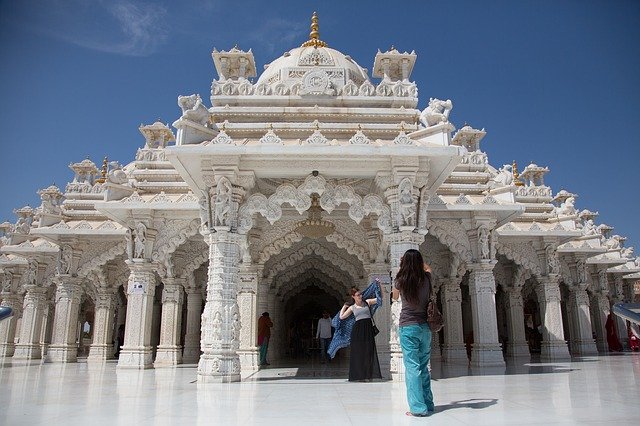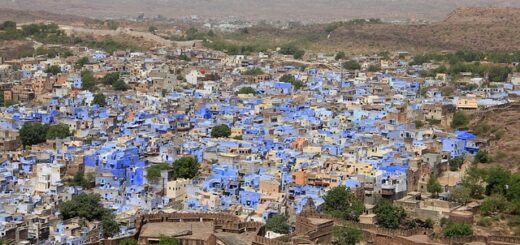10 Facts About India You Didn’t Know
An Asian country with varied topography and diverse cultures, India is full of exciting information hardly known to anybody. It is a country of immense population and no wonder you will find such differences in culture and diversity in India. There are several unusual things about India that will make you stunned. Here we have listed some of the cool and interesting facts about India you didn’t know:

1. India was at one time a continent
It is one of the unknown and interesting facts about India that very people aware of. During the period that dinosaurs roamed the planet, i.e., several millions of years ago, present-day India was an island continent. The island was part of Gondwanaland, an old-world supercontinent that came off and drifted towards the north.
Another 50 million years later, when dinosaurs had become extinct, the Indian and Asian coastal areas engaged with each other due to a collision between the two continental plates.
The collision further created the Himalayas, and you can still find seashells and sea animal fossils high up among the mountains. Interestingly, today, the plate holding the Indian subcontinent keeps moving gradually northwards, making Mount Everest slightly taller each year.
2. The Indian civilization is older than even the Egyptian Civilization
The Indian civilization flourished eight thousand years ago, and still lives on, making it one of the world’s oldest continuous civilizations. In this aspect, it beats even the three-thousand-year-old Egyptian civilization. This is the key reason why it is listed amongst the interesting historical facts about India.
The Indus Civilization, with its rich culture and customs, also had properly planned large towns for its period. The epicenter of the earliest Harappan settlements lies in two states of northern India, namely, Haryana and Rajasthan. Metals like iron and copper found use in such early times and laid the foundation of present-day India’s progress in the metals industry.
3. It was an Indian who discovered the number zero
Yes, it was Aryabhatta, Indian mathematician-cum-astronomer, who invented “zero” towards the end of the fifth century. This incredible contribution has made him immortal! At the young age of 23, he compiled several fields of mathematics in only one book called the “Aryabhatiya”. He invented “zero” while discovering the system of decimal numbers.
Though Aryabhatta didn’t use “zero” numerically in his book at all, his usage of a placeholder while multiplying the digit “ten” by itself recurrently shows that he was well aware of this concept. While there may be no value that zero holds alone, the digit has certainly a lot of importance when placed in front of other numbers.
4. The game of chess has its origin in India
Having several million Indian fans, the game of chess originated in North India around fifteen hundred years ago. The ancient form of the game was quite different from the present-day chess. It involved dice, and chequered squares came into existence only a thousand years later. Also, the rules of the game varied among regions.
Chess played in ancient India has two Sanskrit names, “Chaturanga” (four parts) and “Ashtapada” (spider). The former name indicates the chess pieces representing the army’s four divisions: one chariot, five infantry soldiers, three soldiers on horseback, and one elephant. The latter denotes eight squares on every side of the board, resembling a spider’s eight legs.
Today, the game is considered to be a mark of intelligence if one excels at it. There are natural and world championships that go along among people celebrating this complex but a beautiful game.
5. The shampoo is originally an Indian idea or concept
It is one of the very unique and cool facts about India that you didn’t know. Having its roots in colonial India, “shampoo” is an Indian invention. Its first version consisted of gooseberry, soapberry extract, hibiscus plant, and shikakai paste. All these components have natural properties promoting dense and strong hair growth.
The origin of the word “shampoo” lies in “champu,” an old-age Sanskrit word, meaning “to massage.” So, until the twentieth century, shampooing meant doing a head massage. The country is known for its mastery with herbs and natural medicine, something that the people here used in their shampoos.
The 1900s changed the definition of “shampoo,” i.e., the sense of doing massage shifted to that of washing the hair with soap.
6. Mumbai’s sea-link consists of steel wires equivalent to the earth’s total circumference
Officially known as Rajiv Gandhi Sea Link, the Bandra-Worli sea-link in Mumbai, as massive as fifty thousand elephants, links the western suburb of Bandra with the southern suburb of Worli. The 16-lane engineering marvel is a project of the Hindustan Construction Group.
A sturdy, steel cable-stayed bridge, the sea-link consists of high-tension steel wire as long as the earth’s equatorial circumference, i.e., 40,075 kilometers. This galvanized steel wire supports the cable stays firmly. Driving here is one of the major reasons why people love to visit this place. So, from mesmerizing spots to amazing roads to drive, Mumbai has a lot to offer you. Planning a trip for Mumbai and packing your bags with the current travel trend, is something that you certainly must consider.
7. India is home to a village without doors
Can you believe it? Not a single house in the Indian village of Shani Shingnapur has doors. For that matter, even its bank is doorless! Located in Maharashtra, Shani Shingnapur has a history of its residents living in such houses for hundreds of years. Also, there’s no trace of a police station here.
This minimal need for safety or security among Shani Shingnapur’s residents is due to their strong belief in unique security provided by Shani, a Hindu god whose well-known temple is the prime attraction of the village. The residents believe that anyone stealing from their homes will not be able to escape Lord Shani’s wrath. It is one of the interesting facts about Indian culture that surprise several people across the world.
8. Diamonds were first mined in India
For hundreds of years, one was able to find diamonds in India only. They were first excavated in the historical city of Golconda around five thousand years ago. The alluvial deposits in the deltas of rivers like Krishna and Godavari contained these precious stones.
On their discovery, Indians valued diamonds due to their toughness and luster, and also since they deflect light and embed metal. So, diamonds found several uses like adornments, cutting tools, and talisman. Indians also used diamonds to polish one another and created the first polishing board from these highly sought-after precious stones.
9. The world’s largest mango output comes from India
With a yearly mango production crossing 1.2 million, India is the world leader in mango supply. India owes almost fifty percent of the global mango output. What’s more, the mango output consists of several hundred varieties! It is one of the very interesting and fun facts about India for kids who are fond of mangoes.
Mango cultivation began in India around the twentieth century BC, and around this time, humans realized the value of the tropical fruit. Several Indian states produce mangoes with approximately twenty-five lakh acres reserved for mango farming.
10. The world’s biggest family lives together in India
A family of 181 members lives together in Baktawng, a village in the Indian state of Mizoram. Ziona Chana, a construction worker, is head of this large Christian family. He has thirty-nine wives, ninety-four children, fourteen daughters-in-law, and thirty-three grandchildren, totaling to 181 members.
The family lives in a house having a hundred rooms. The family’s typical meal has them cooking thirty chickens, sixty- six kilograms of potatoes and not less than 110 kilograms of rice. Zathiangi is Ziona’s first wife and organizes the family for domestic chores.
Ziona Chana is a member of the Chana sect which permits men to marry multiple times. One of his sons Parliana praises his father as he looked after needy and parentless village women by marrying several times.
What’s next waiting for you?
India boasts several unique tourist attractions that every traveler should consider visiting. The list of best places to visit in India is unlimited and you require a sufficient amount of time to cover most of those.
Now you know quite some unusual facts about India, those will help you to explore this incredible country with total excitement. You’d also enjoy exploring these facts, for instance, traveling on Mumbai’s sea-link bridge or visiting Ziona and his large family in Mizoram. Make sure to use an original scratch map as it will continuously remind you of such exciting experiences.
Apart from the interesting India facts mentioned above, there are several other surprising Indian cultural facts that you would like to discover by planning a trip to this amazing country. If you are planning to visit in the coming time then check our India travel guide to know popular cities to visit in India.



















